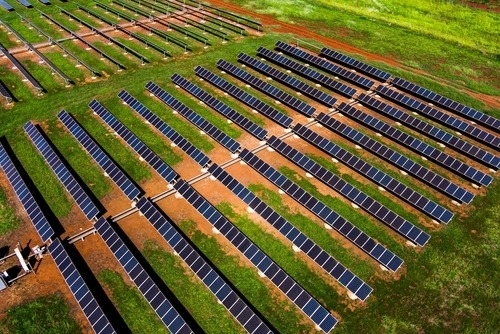Hawaiian Electric study points to factors beyond its control to reach a zero-carbon economy by 2045

While Hawaiian law mandates 50 percent reduction in greenhouse gas emissions by 2030 and net-zero emissions by 2045, a new study recently commissioned by Hawaiian Electric claims that technological advances, land-use policy consensus and more will be needed to actually, successfully decarbonize the state.
“This study is the first of its kind for Hawaii and we commissioned it to understand the scale of decarbonization required in every sector of our economy and the scope of work needed to be successful over the next two decades,” Shelee Kimura, president and CEO of Hawaiian Electric, said .
Every industry will need to be involved and every person have a stake, the report noted, putting success well beyond Hawaiian Electric’s own efforts. Time is running out to meet mandated targets, and the report reckoned with this, stating that aggressive actions are not only needed, but will have to be in play by 2030 to have hope of achieving full decarbonization.
The report, however, did not focus on any suggestions, but posited the needs of the state over all.
The new study dove into the five islands served by Hawaiian Electric, charting emissions data from electricity, aviation, vehicles, industry, buildings, agriculture and waste. Transportation makes up the largest chunk of emissions in the state, accounting for 48 percent of generation. Electricity accounts for another 27 percent of emissions. To make change, the report cited both energy efficiency and reducing energy demand as crucial to achieving short and medium-term emissions reductions and cutting the amount of land needed for future renewable energy projects.
“We want to ensure we deliver on our part in this interdependent effort for our state,” Kimura said. “Renewable energy is required but that alone doesn’t get Hawaii to the finish line. The study confirms that success requires contributions from every individual and every industry. We’ve made a lot of progress already by working together and we offer this report to policymakers, researchers, planners, businesses, organizations and individuals as a conversation starter and as a resource for creating action plans across all sectors of our economy.”
Hawaiian Electric commissioned the study to further is own Climate Change Action Plan, but has since provided the data involved to the state for its separate studies. The company worked with the consulting firm Energy and Environmental Economics (E3).
“Hawaiian Electric deserves credit for taking a holistic view of carbon impacts among all sectors in its Pathways to Net Zero study that can serve as a basis to inform future policies and actions,” Mark Glick, the state’s Chief Energy Officer, said. “With the State Energy Office’s intention to also investigate energy costs, sectoral workforce impacts and recommendations for next steps, the back-to-back decarbonization analyses might be considered a one-two punch to counter the harmful effects of carbon-intensive energy in Hawaii.”
The biggest takeaway, though, from a utility standpoint is that*- renewable electricity generation is necessary to achieve decarbonization goals in Hawaii, but will not by itself be sufficient to meet them. Even if things shift to greener, more electrified ends, the report also reminded that demand for power will surge as a result, and that will need to be addressed as well.
